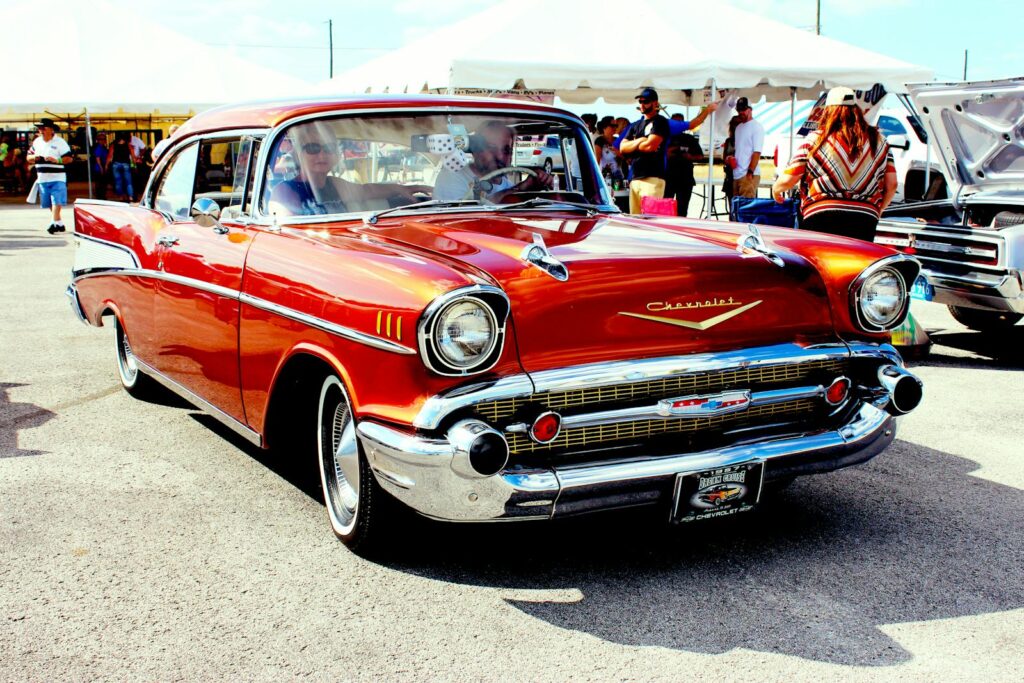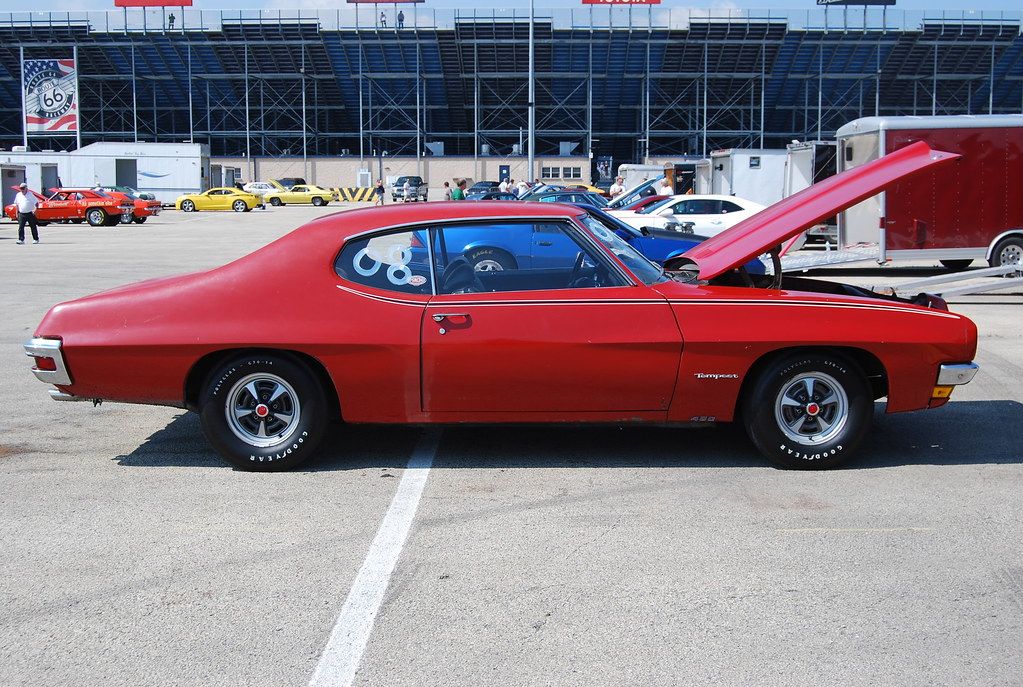
Alright, gearheads and nostalgia junkies, buckle up! After the era of the gas-guzzling muscle machines of the 1960s, you might think the 1970s would have been a snooze-fest for car lovers, especially with those pesky energy crises pushing American buyers toward compact cars. But trust us, that decade was anything but dull! Sure, there were a few infamous rides (we’re looking squarely at you, Ford Pinto!), but the ’70s still delivered a bumper crop of vehicles that would go on to become absolute, iconic classics, full of personality and pizzazz.
Whether they ended up famous for all the right reasons or a little bit infamous for their… unique qualities, these cars undeniably made their mark. They sculpted the automotive landscape, offered unforgettable designs, and basically laid down the law for what cool on four wheels looked like. Get ready to dive deep into some serious automotive history, because we’re talking about the rides that truly defined an era.
The 1970s wasn’t just a decade; it was a whole mood. It was about bold expression, freewheeling fun, and cars that mirrored that wild, untamed spirit perfectly. From muscle cars flexing their horsepower with earth-shaking roars, to sleek sports cars turning every head on the block, these machines were so much more than just transportation. They were rolling statements of power, rebellion, and undeniably killer style. With their eye-popping colors, daring designs, and engines that packed a serious punch, ’70s cars had an attitude all their own, leaving a legacy that still gets our engines revving today. So, grab your aviators and turn up the classic rock, because we’re about to cruise through 15 of the most legendary cars that absolutely owned this unforgettable era!
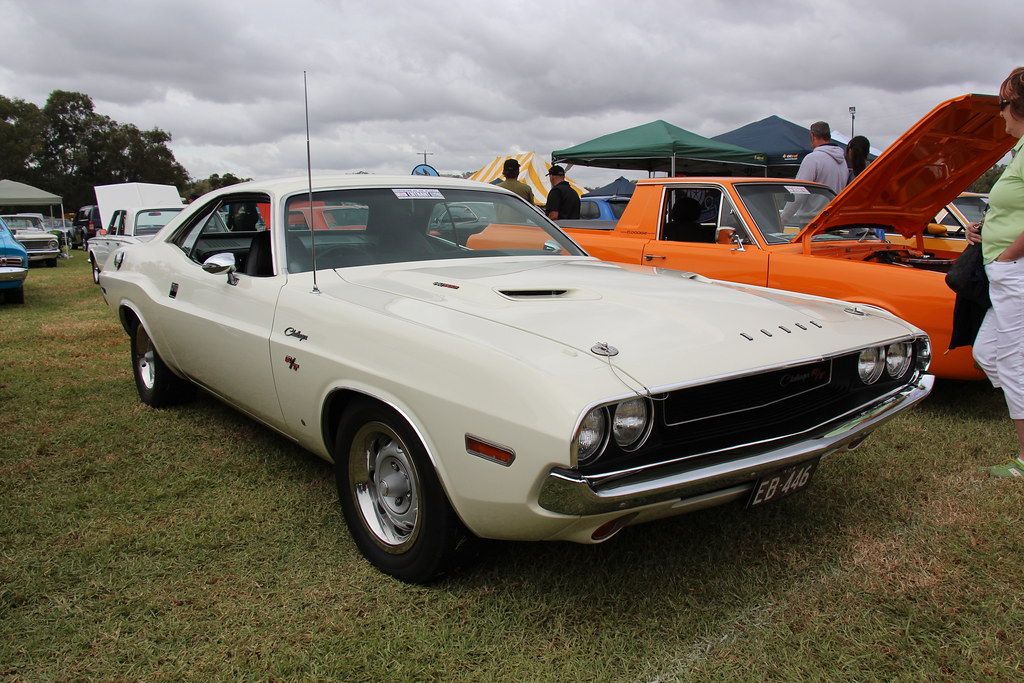
1. **1970 Dodge Challenger R/T**The 1970 Dodge Challenger R/T wasn’t just another car; it was an attitude on wheels, a roaring statement of power and style that truly defined its era. Packing a formidable 426 HEMI V8 engine, this Mopar masterpiece didn’t just drive—it roared down the roads like a lion with something to prove, leaving an indelible impression everywhere it went. Its aggressive styling, complemented by those famously bold color options, instantly cemented its place as a top-tier favorite among muscle car enthusiasts, establishing a legacy of power and rebellion.
Whether cruising down the boulevard or lining up at the drag strip, this beast exuded an unapologetically bold presence, embodying the untamed spirit of the ’70s. In a decade where subtlety often took a back seat, the Dodge Challenger R/T demanded attention and received it, becoming a true automotive icon. It was a cultural touchstone, a symbol of freedom that perfectly captured the freewheeling fun of the time, making every drive an exhilarating experience that thrilled the senses.
Car Model Information: 2022 Dodge Challenger R/T
Name: Dodge Challenger
Production: 1969–1974,1977–1983,2008–2023
ModelYears: 1970–1974,1978–1983,2008–2023
Caption: 2015 Dodge Challenger SRT Hellcat
Manufacturer: Dodge
Categories: 1970s cars, 1980s cars, 2000s cars, 2010s cars, 2020s cars
Summary: The Dodge Challenger is the name of three generations of automobiles produced by the American automobile manufacturer Dodge. However, the first use of the Challenger name by Dodge dates back to 1959 for marketing a “value version” of the full-sized Coronet Silver Challenger.
From model years 1970 to 1974, the first-generation Dodge Challenger pony car was built using the Chrysler E platform in hardtop and convertible body styles sharing significant components with the Plymouth Barracuda.
The second generation, from model years 1978 to 1983, was a rebadged Mitsubishi Galant Lambda / Sapporo, a coupe version of an economical compact car.
The third and current generation is a full-size muscle car that was introduced in early 2008 initially as a rival to the evolved fifth generation Ford Mustang and the fifth generation Chevrolet Camaro.
In November 2021, Stellantis announced that the 2023 model year would be the final model year for both the LD Dodge Charger and LA Dodge Challenger, as the company will focus its plans on electric vehicles rather than fossil fuel-powered vehicles, due to tougher emissions standards required by the Environmental Protection Agency for the 2023 model year. Challenger production ended on December 22, 2023, and the Brampton, Ontario, assembly plant will be re-tooled to assemble an electrified successor.
Get more information about: Dodge Challenger
Buying a high-performing used car >>>
Brand: Dodge Model: Challenger
Price: $34,988 Mileage: 17,511 mi.
Read more about: Unearthing the Automotive Unicorns: 9 Muscle Cars So Rare Even Dedicated Collectors Scramble to Find Them
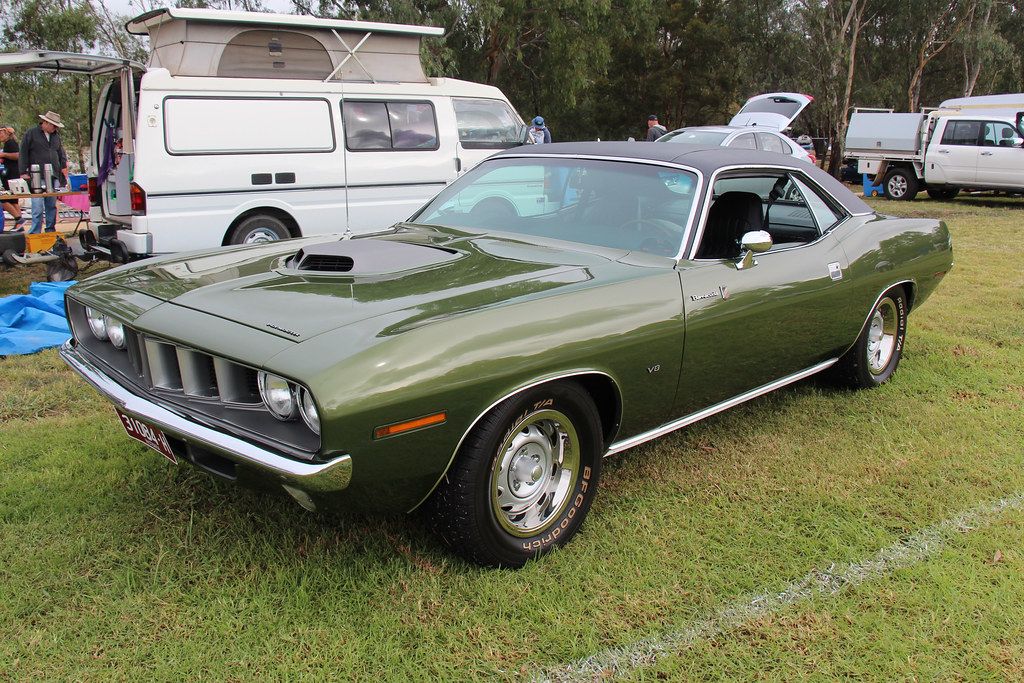
2. **1971 Plymouth HEMI ‘Cuda**Alright, if you’re talking about cars that didn’t just hint at power but screamed it, then the 1971 Plymouth HEMI ‘Cuda absolutely needs to be at the top of your list. Beneath its strikingly aggressive hood lived a truly massive 426 HEMI V8 engine, making it a pure muscle machine capable of tearing up any pavement with remarkable ease. Its design, combined with that raw power, turned heads wherever it went, announcing its presence with a roar that felt less like an engine and more like a prehistoric beast unleashed on the roads. It was a bold statement of automotive prowess, built for those who craved the thrill of untamed speed.
The ‘Cuda’s incredible blend of raw, untamed power and its absolutely striking aesthetic design quickly elevated it to legendary status among muscle car aficionados. This was a car that spoke directly to the inner rebel in all of us, a machine that dared to be different and pushed the boundaries of automotive performance and style. In a decade renowned for its boundary-pushing innovations, the HEMI ‘Cuda stood out as a true icon, its legacy a powerful narrative of fearless design and an uncompromising commitment to exhilarating performance.
Car Model Information: 2017 Mazda Mazda3 Sport
Caption: 1970 Hardtop Coupe
Name: Plymouth Barracuda
Manufacturer: Plymouth (automobile)
Production: 1964–1974
Assembly: Fenton, Missouri,Hamtramck, Michigan,Maywood, California,Windsor, Ontario
Layout: Front-engine, rear-wheel drive layout
Class: Pony car
Categories: 1970s cars, All articles with dead external links, All articles with unsourced statements, Articles with dead external links from February 2018, Articles with dead external links from January 2022
Summary: The Plymouth Barracuda is a two-door pony car that was manufactured by Chrysler Corporation from 1964 through 1974 model years.
The first-generation Barracuda was based on the Chrysler A-body and was offered from 1964 until 1966. A two-door hardtop (no B-pillar) fastback design, it shared a great majority of parts and bodywork with the Plymouth Valiant, except for the distinctive wraparound rear glass.
The second-generation Barracuda, though still Valiant-based, was heavily redesigned. Built from 1967 through 1969, it was available as a two-door in fastback, notchback, and convertible versions.
The third generation, offered from 1970 until 1974, was based on the Chrysler E-body, exclusive to it, and the slightly larger Dodge Challenger. A completely new design, the two-door Barracuda was available in hardtop and convertible body styles.
Get more information about: Plymouth Barracuda
Buying a high-performing used car >>>
Brand: Plymouth Model: HEMI ‘Cuda
Price: $13,949 Mileage: 76,933 mi.
Read more about: Untamed Beasts: Unmasking the Most Dangerously Potent Muscle Cars Ever Unleashed on Public Roads
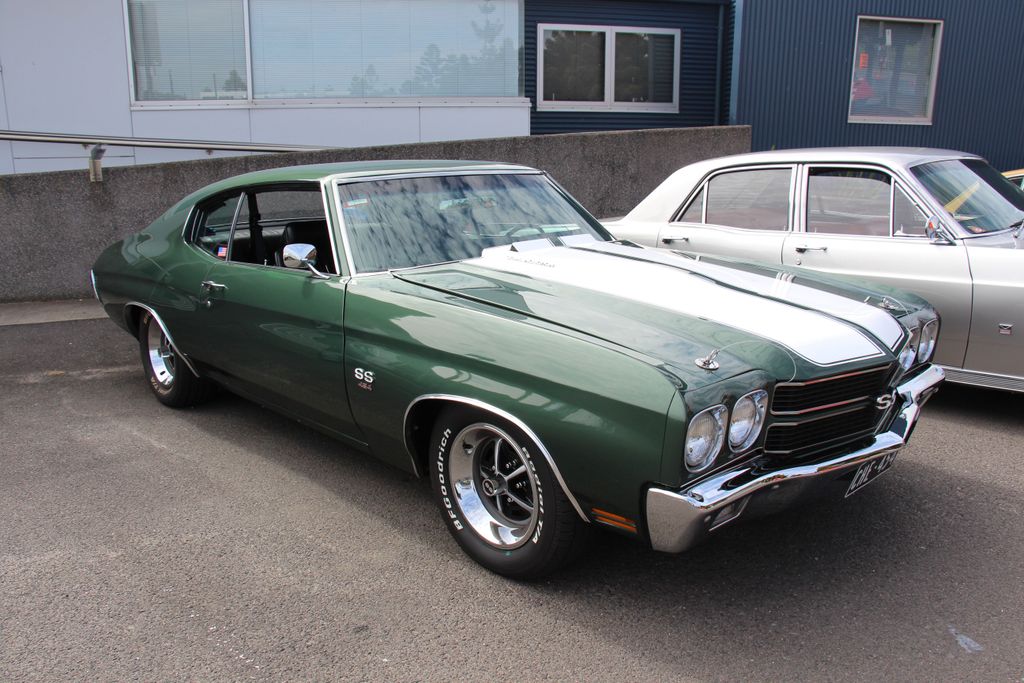
3. **1970 Chevrolet Chevelle SS 454**The 1970 Chevrolet Chevelle SS 454 was, without a doubt, the very definition of power on wheels, a quintessential American muscle car that commanded respect. With its truly monstrous 454 cubic inch V8 engine nestled within, this wasn’t merely a car—it was an undeniable force to be reckoned with on any street it graced. This Chevelle didn’t just move forward; it rumbled, producing a deep, guttural symphony of horsepower and torque that consistently left competitors in its dust. Its sleek design, characterized by bold, confident lines, made the Chevelle SS 454 a truly breathtaking sight, perfectly capturing the essence of pure American muscle.
This car demanded attention, solidifying its place as a true road warrior of its time, built for dominance and designed to leave a lasting impression. But beyond its brute strength and striking good looks, the Chevelle was a profound symbol of the freedom and exhilarating excitement that so vividly defined the entire 1970s. It transformed every single drive into an adventure, an experience that thrilled the senses and beckoned to the open road. It was a car that truly embodied the joy of powerful performance and the free spirit of an unforgettable era.
Car Model Information: 2017 Mazda Mazda3 Sport
Name: Chevrolet Chevelle
Caption: 1970 Chevrolet Chevelle SS 396 Sport Coupe
Manufacturer: Chevrolet
Production: 1963–1977
ModelYears: 1964–1977
Class: Mid-size
Platform: GM A platform (RWD)
Layout: FR layout
Successor: Chevrolet Malibu
Categories: 1970s cars, All articles needing additional references, All articles that may contain original research, All articles with specifically marked weasel-worded phrases, All articles with unsourced statements
Summary: The Chevrolet Chevelle is a mid-sized automobile that was produced by the Chevrolet division of General Motors (GM) in three generations for the 1964 to 1977 model years. Part of the GM A-body platform, the Chevelle was one of Chevrolet’s most successful nameplates. Body styles included coupes, sedans, convertibles, and station wagons. The “Super Sport” versions were produced through the 1973 model year and Lagunas from 1973 through to 1976.
After a four-year absence, the El Camino was reintroduced as part of the new Chevelle lineup in 1964.
From 1964 to 1969, GM of Canada sold a modified version of the Chevelle that included a Pontiac-style grille, and a LeMans instrument panel, marketed as the Beaumont.
The Malibu was the top-of-the-line model to 1972, and completely replaced the Chevelle nameplate starting with the redesigned, and downsized 1978 model year.
Get more information about: Chevrolet Chevelle
Buying a high-performing used car >>>
Brand: Chevrolet Model: Chevelle SS 454
Price: $13,949 Mileage: 76,933 mi.
Read more about: Beyond the Drag Strip: The Definitive Guide to the Best Daily Driver Muscle Cars of the ’60s
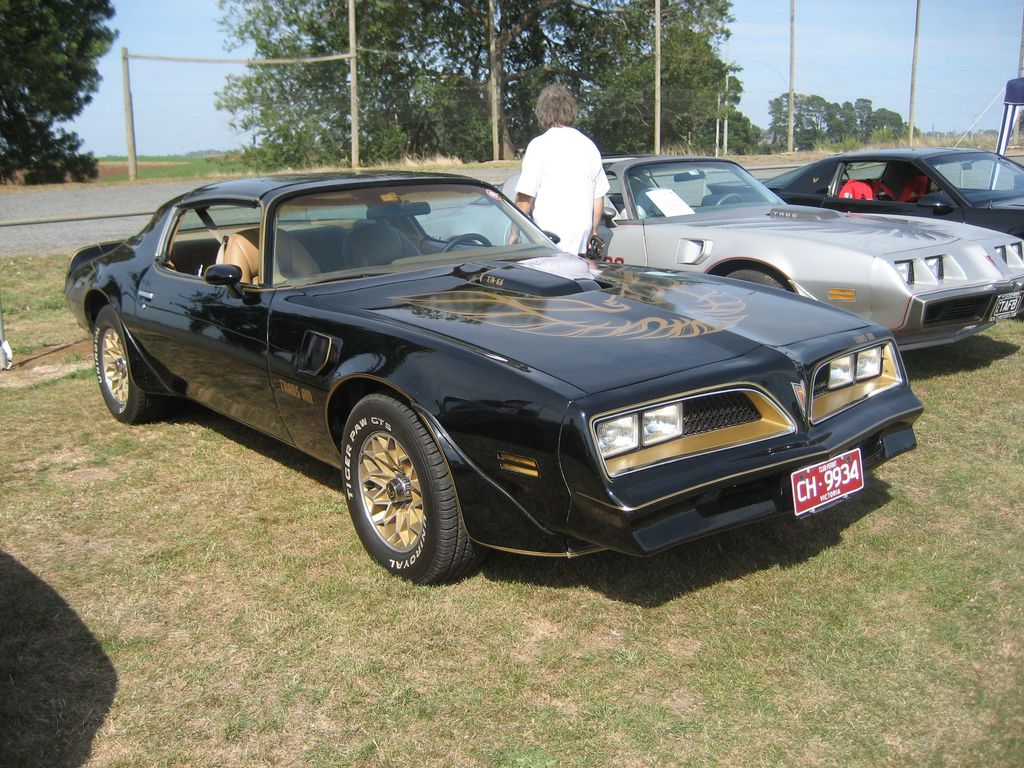
4. **1977 Pontiac Firebird Trans Am**Get ready to hit the road with a true ’70s legend that transcended mere transportation and became a bona fide cultural icon: the 1977 Pontiac Firebird Trans Am. This wasn’t just any car; it soared to movie star status, famously stealing hearts and scenes in the legendary film ‘Smokey and the Bandit.’ This sleek black-and-gold beauty, with its potent 6.6L V8 engine and that unmistakable screaming eagle emblazoned proudly on its hood, instantly became the epitome of cool. It was a car that didn’t just drive; it commanded the road, exuding an undeniable aura of effortless swagger.
But the Trans Am’s allure extended far beyond its stunning looks; it was a formidable package of pure performance wrapped in an utterly irresistible style. Its sleek lines, combined with a bold and aggressive design, made it an instant favorite among car enthusiasts, a true testament to the exceptional artistry defining ’70s automotive design. In a decade known for its playful excess and flamboyant statements, the Firebird Trans Am dominated the scene as a powerful symbol of unbridled fun and thrilling rebellion, a living legend that continues to capture imaginations.
Car Model Information: 2022 Mitsubishi Outlander SE
Name: Pontiac Firebird
Caption: The second, third, and fourth generations of,the Pontiac Firebird Trans Am
Manufacturer: Pontiac (automobile)
Production: February 23, 1967 – August 30, 2002
ModelYears: 1967 – 2002
Class: Pony car,Muscle car
Platform: GM F platform
Related: Chevrolet Camaro
Layout: Front engine, rear-wheel-drive layout
Categories: 1970s cars, 1980s cars, 1990s cars, 2000s cars, All articles with dead external links
Summary: The Pontiac Firebird is an American automobile built and produced by Pontiac from the 1967 to 2002 model years. Designed as a pony car to compete with the Ford Mustang, it was introduced on February 23, 1967, five months after GM’s Chevrolet division’s platform-sharing Camaro. This also coincided with the release of the 1967 Mercury Cougar, Ford’s upscale, platform-sharing version of the Mustang.
The name “Firebird” was also previously used by GM for the General Motors Firebird series of concept cars in the 1950s.
Get more information about: Pontiac Firebird
Buying a high-performing used car >>>
Brand: Pontiac Model: Firebird Trans Am
Price: $18,409 Mileage: 57,702 mi.
Read more about: Untamed Beasts: Unmasking the Most Dangerously Potent Muscle Cars Ever Unleashed on Public Roads

5. **1970 Ford Mustang Boss 302**Hold onto your hats, because the 1970 Ford Mustang Boss 302 was a track-ready beast unleashed onto the streets, meticulously engineered to catapult performance to entirely new, exhilarating heights. This was no ordinary pony car; with its high-revving engine and unmistakably aggressive styling, it didn’t just gently hug the curves of the road—it absolutely devoured them with fierce hunger. The Boss 302 transcended the definition of a mere muscle car; it was a profound statement of sheer power, precision engineering, and an unyielding commitment to speed, designed to dominate both the showroom and the race track.
Its sleek design, perfectly harmonized with its incredibly potent engine, quickly solidified its place as an absolute favorite among devoted Mustang enthusiasts, transforming it into a true icon of cutting-edge American automotive engineering. In a world teeming with big engines and even bolder designs, the Mustang Boss 302 carved out its distinct niche, shining brightly as a car that brilliantly combined sophisticated style with undeniable substance. It perfectly captured the dynamic and spirited essence of the ’70s, embodying an era where cars were as thrilling to drive as they were captivating to behold, leaving a powerful and enduring legacy.
Car Model Information: 2022 Mitsubishi Outlander SE
Layout: FR layout
Manufacturer: Ford Motor Company
Production: 1969–1970 and 2012–2013
Name: Boss 302 Mustang
Assembly: Dearborn, Michigan
Designer: Larry Shinoda
Engine: Ford Boss 302 engine,Overhead valve,V8 engine
Transmission: Manual transmission
Related: Ford Mustang
Class: Muscle car
BodyStyle: Fastback,Coupe
Categories: All articles needing additional references, All articles with unsourced statements, Articles needing additional references from June 2023, Articles with short description, Articles with unsourced statements from March 2024
Summary: The Mustang Boss 302 is a high-performance 302 cu in (4.9 L) H.O. V8-powered variant of the Ford Mustang originally produced by Ford in 1969 and 1970. Developed to meet homologation requirements to compete in Trans Am racing, it was Ford’s response to the success of the Chevrolet Camaro Z/28 in the 5 L (305.1 cu in) and under SCCA series since 1967. While substantial modifications were required to the stock Boss 302 to be competitive on the track, many thousands were sold to the public in a street-legal form that included a refined high-performance motor and upgrades to the suspension and brakes over base Mustangs.
Ford revived the Boss 302 name for another two year production run in 2012 and 2013.
Get more information about: Boss 302 Mustang
Buying a high-performing used car >>>
Brand: Ford Model: Mustang Boss 302
Price: $18,409 Mileage: 57,702 mi.
Read more about: Beyond the Drag Strip: The Definitive Guide to the Best Daily Driver Muscle Cars of the ’60s
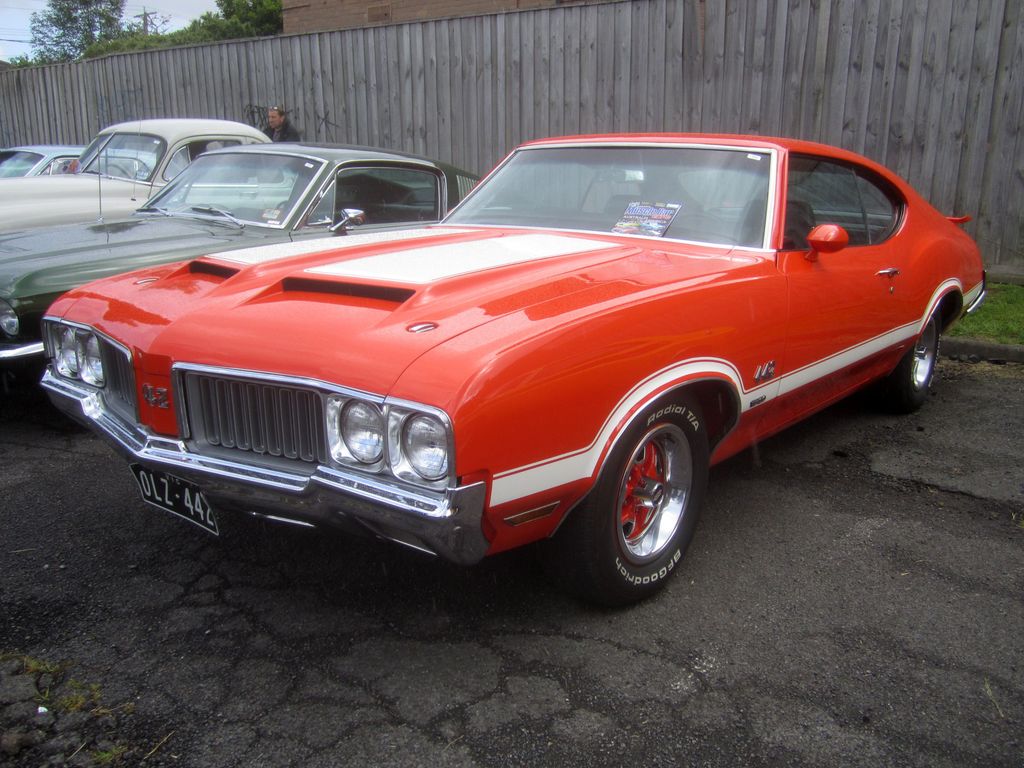
6. **1970 Oldsmobile 442 W-30**Prepare yourselves for a ride that epitomized the perfect blend of raw luxury and unyielding muscle: the 1970 Oldsmobile 442 W-30. This magnificent machine was nothing short of a masterpiece in both its engineering prowess and its distinctive design, setting a new standard for performance with a touch of class. Boasting a massive amount of torque and an exceptionally powerful engine, it proudly earned its reputation as one of the fastest Oldsmobiles ever to hit the asphalt, a true powerhouse capable of effortlessly leaving many other muscle cars trailing in its impressive wake. It commanded respect not just for its performance, but also for its undeniable presence.
Beyond its brute strength, the 442 W-30 was a shining symbol of both sophisticated luxury and exhilarating speed, a rare combination that truly set it apart from the crowd. Its sleek lines and remarkably elegant design made it an absolute standout on any road it graced, a vehicle that turned heads and elicited admiring glances wherever it went. In a decade characterized by bold designs and an insatiable hunger for powerful engines, this Oldsmobile brilliantly captured the very essence of ’70s automotive excellence, transforming into a true icon that offered an irresistible blend of high-octane performance and impeccable style.
Car Model Information: 2017 Mazda Mazda3 Sport
Name: Oldsmobile 442
Manufacturer: Oldsmobile
ModelYears: 1964–1980,1985–1987,1990–1991
Class: Muscle car
Layout: FR layout
Caption: 1971 Oldsmobile 442
Categories: 1960s cars, 1970s cars, 1980s cars, All articles with unsourced statements, Articles with short description
Summary: The Oldsmobile 4-4-2 is a muscle car produced by Oldsmobile between the 1964 and 1987 model years. Introduced as an option package for US-sold F-85 and Cutlass models, it became a model in its own right from 1968 to 1971, spawned the Hurst/Olds in 1968, then reverted to an option through the mid-1970s. The name was revived in the 1980s on the rear-wheel drive Cutlass Supreme and early 1990s as an option package for the new front-wheel drive Cutlass Calais.
The “4-4-2” name (pronounced “Four-four-two”) derives from the original car’s four-barrel carburetor, four-speed manual transmission, and dual exhausts. It was originally written “4-4-2” (with badging showing hyphens between the numerals), and remained hyphenated throughout Oldsmobile’s use of the designation. Beginning in 1965, the 4-4-2s standard transmission was a three-speed manual along with an optional two-speed automatic and four-speed manual, but were still badged as “4-4-2″s.
Because of this change, from 1965 on, according to Oldsmobile brochures and advertisements, the 4-4-2 designation referred to the 400 cubic inch engine, four-barrel carburetor, and dual exhausts. By 1968, badging was shortened to simply “442”, but Oldsmobile brochures and internal documents continued to use the “4-4-2” model designation.
Get more information about: Oldsmobile 442
Buying a high-performing used car >>>
Brand: Oldsmobile Model: 442 W-30
Price: $13,949 Mileage: 76,933 mi.
Read more about: Untamed Beasts: Unmasking the Most Dangerously Potent Muscle Cars Ever Unleashed on Public Roads
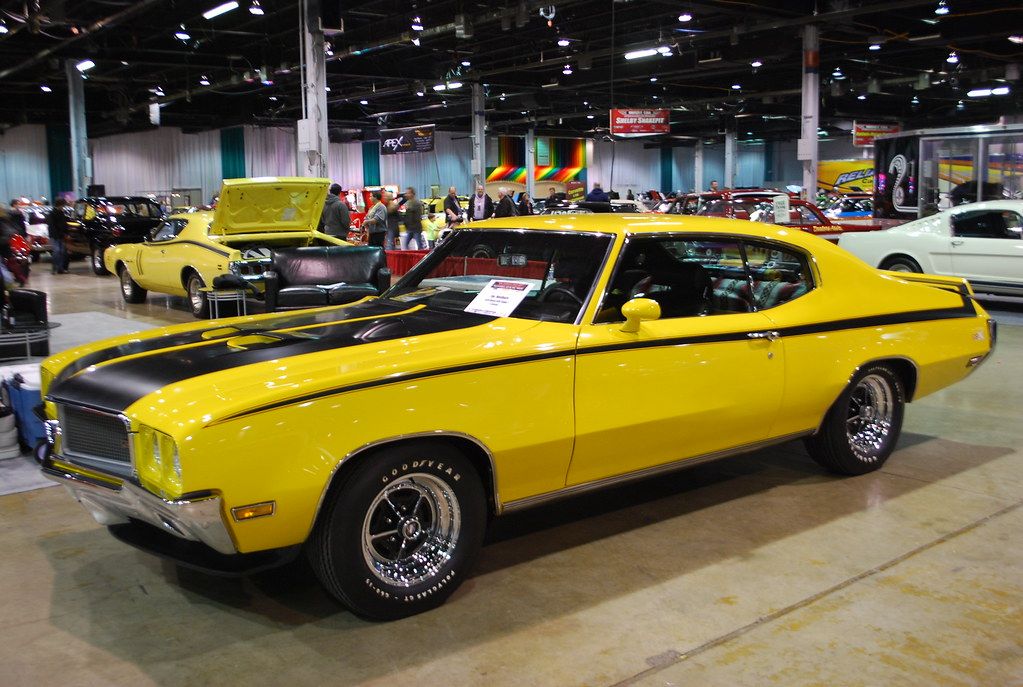
7. **1970 Buick GSX Stage 1**And now, for Buick’s spectacular entry into the fierce muscle car wars of the era: the magnificent 1970 Buick GSX Stage 1. This was no ordinary contender; it was a bona fide torque monster, an automotive force that demanded attention with every fiber of its being. Housing a formidable 455 cubic inch V8 engine and boldly adorned with those unmistakable racing stripes, this was a car that didn’t just ask for respect—it absolutely commanded it with its sheer, overwhelming presence. This vehicle transcended mere power, becoming a profound statement of unparalleled performance fused seamlessly with undeniable, head-turning style, carving its own unique niche in muscle car legend.
The GSX Stage 1 quickly became legendary for its absolutely incredible acceleration, capable of pinning you to your seat, and its remarkably agile handling, a surprising feat for such a powerful machine. These attributes instantly made it a beloved favorite among discerning car enthusiasts who appreciated both raw speed and refined control. Its aggressive design, perfectly matched with its incredibly powerful engine, ensured it was not just another face in the crowd but a definitive standout in the fiercely competitive world of muscle cars. It brilliantly captured the vibrant, powerful spirit of the ’70s in every rev of its mighty engine, embodying an era where cars were built to excite, impress, and dominate.
Alright, you thought the first seven were awesome? Hold onto your aviators, because we’re just getting warmed up! The ’70s weren’t just about American muscle; they were a global party of innovation, style, and pure driving thrill. We’re about to cruise through eight more legends that absolutely cemented their place in automotive history, from sleek European imports that stunned the world to more homegrown heroes that flexed serious muscle and pushed boundaries. Get ready to have your engine revved, because these rides are unforgettable!
Read more about: Untamed Beasts: Unmasking the Most Dangerously Potent Muscle Cars Ever Unleashed on Public Roads
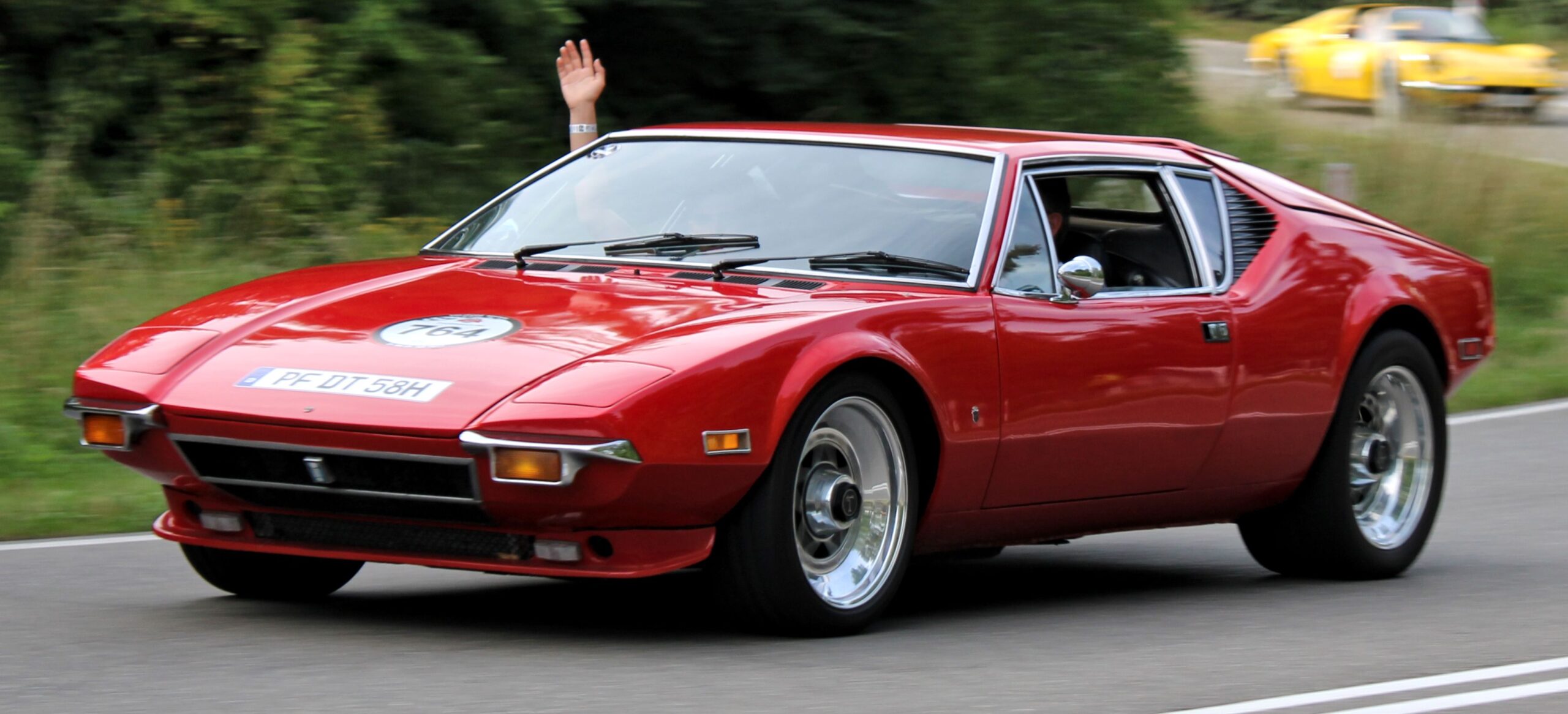
8. **1972 De Tomaso Pantera**Talk about a car that knew how to make an entrance! The 1972 De Tomaso Pantera was like the ultimate fusion dance between Italian design flair and raw, unadulterated American muscle. Imagine those sleek, exotic looks, courtesy of legendary designer Marcello Gandini, paired with a thumping Ford V8 engine – it was a combination that truly captured imaginations globally, literally turning heads everywhere it went. This wasn’t just a car; it was a bold declaration of automotive passion where two worlds brilliantly collided.
But don’t let those gorgeous lines fool you; the Pantera was far from just a pretty face. This beast was a serious performance machine, designed for the thrill of the open road. Its powerful engine delivered exhilarating speed, while its agile handling made every drive an absolute joy. It offered the best of both worlds: undeniable style perfectly blended with substantial performance, proving you could have beauty *and* beast all in one magnificent package.
In a decade known for audacious designs and powerful engines, the De Tomaso Pantera absolutely roared its way to iconic status. It embodied the vibrant, spirited essence of the ’70s, a car as exciting to pilot as it was captivating to behold. With over two decades in production and more than 7,000 units sold, this Italian “Panther” undeniably passed the test of time, earning its rightful spot among the best cars ever built and inspiring countless modern supercars that followed.
Car Model Information: 2022 Mitsubishi Outlander SE
Name: De Tomaso Pantera
Caption: De Tomaso Pantera GT5-S
Manufacturer: De Tomaso
Assembly: Modena
Production: 1971–1992 (7,260 produced)
Designer: Tom Tjaarda,Marcello Gandini
Class: Sports car
BodyStyle: coupé
Layout: Rear mid-engine, rear-wheel-drive layout
Engine: ubl
Abbr: on – later spec
Order: Ford small block engine#351W
Transmission: Manual transmission,List of ZF transmissions
Wheelbase: 2500 mm
Length: 158 in
Disp: flip – later spec
Width: 67 in
Height: 1100 mm
Weight: 1474 kg
Predecessor: De Tomaso Mangusta
Successor: De Tomaso Guarà
Categories: 1980s cars, 1990s cars, All Wikipedia articles needing clarification, Articles with hAudio microformats, Articles with short description
Summary: The De Tomaso Pantera is a mid-engine sports car produced by Italian automobile manufacturer De Tomaso from 1971 to 1992. Italian for “Panther”, the Pantera was the automaker’s most popular model, with over 7,000 manufactured over its twenty-year production run. More than three quarters of the production were sold by American Lincoln-Mercury dealers from 1972 to 1975; after this agreement ended De Tomaso kept manufacturing the car in ever smaller numbers into the early 1990s.
Get more information about: De Tomaso Pantera
Buying a high-performing used car >>>
Brand: De Tomaso Model: Pantera
Price: $18,409 Mileage: 57,702 mi.
Read more about: The 14 Silent Speed Demons: Unearthing Supercars That Secretly Outran Ferrari

9. **1970 Chevrolet Camaro Z28**If you’re looking for a performance icon that packed a serious punch with sharp styling, then the 1970 Chevrolet Camaro Z28 is your ticket to ride. This was a car that didn’t just hint at excitement; it promised thrills at every turn, begging to be driven fast and hard. With its high-revving 350 V8 engine under the hood, this Z28 was a true symphony of horsepower and agility, crafted for those who lived for the exhilarating rush of the open road and the challenge of a winding curve.
This Camaro Z28 wasn’t just built for show; it was a bona fide performance machine, pure and simple. Its incredibly agile handling, paired with that powerful engine, quickly made it a beloved favorite among car enthusiasts who craved both speed and control. It was a shining testament to the exceptional artistry that defined ’70s automotive design, a car that looked just as aggressive standing still as it did blurring past you on the highway.
In a world brimming with bold designs and an insatiable hunger for powerful engines, the 1970 Camaro Z28 carved out its distinct niche, standing out as a car that flawlessly offered both compelling style and undeniable substance. It perfectly captured the dynamic and spirited essence of the ’70s, embodying an era where cars were as thrilling to drive as they were captivating to behold, leaving a powerful and enduring legacy that still excites us today.
Car Model Information: 2022 Mitsubishi Outlander SE
Name: Chevrolet Camaro
Manufacturer: Chevrolet
Production: 1966–2002,2009–2023
ModelYears: 1967–2002,2010–2024
Class: Pony car
BodyStyle: coupe,convertible
Platform: GM F platform,GM Zeta platform,GM Alpha platform
Layout: Front-engine, rear-wheel-drive layout
Categories: 1970s cars, 1980s cars, 1990s cars, 2+2 coupés, 2000s cars
Summary: The Chevrolet Camaro is a mid-size American automobile manufactured by Chevrolet, classified as a pony car. It first went on sale on September 29, 1966, for the 1967 model year and was designed to compete with the Ford Mustang. The Camaro shared its platform and major components with the Firebird, produced by General Motors’ Pontiac division that was also introduced for the 1967 model year.
Four distinct generations of the Camaro were developed before production ended in 2002. The nameplate was revived on a concept car that evolved into the fifth-generation Camaro; production started on March 16, 2009.
Production of the sixth generation of the Camaro ended in December 2023, for the 2024 model year.
Get more information about: Chevrolet Camaro
Buying a high-performing used car >>>
Brand: Chevrolet Model: Camaro Z28
Price: $18,409 Mileage: 57,702 mi.
Read more about: The Undeniable Rise: 12 Vintage Cars That Have Skyrocketed to 10x Their Original Value

10. **1970 Dodge Charger R/T**Get ready for a serious dose of Mopar magic, because the 1970 Dodge Charger R/T was, without a doubt, the ultimate American muscle car. This wasn’t just any vehicle; it was a roaring declaration of power and style, destined to become a true icon of ’70s automotive design. With its unmistakably aggressive front grille and those sleek, commanding body lines, this car didn’t just ask for attention—it absolutely demanded it, establishing its presence with an authoritative swagger that was impossible to ignore. It was a legend on wheels, built for dominance.
But let’s be real, the Charger R/T was so much more than just its stunning good looks; it was a pure performance machine through and through. Its incredibly powerful engine, combined with handling that surprised many for such a formidable beast, instantly made it a beloved favorite among car enthusiasts. This vehicle promised exhilarating thrills at every turn, transforming every drive into an unforgettable adventure and perfectly capturing the essence of raw, untamed power.
In a decade characterized by bold designs and an insatiable hunger for powerful engines, the 1970 Dodge Charger R/T stood out as an undisputed icon, a car that brilliantly offered both compelling style and profound substance. It perfectly captured the vibrant, powerful spirit of the ’70s, embodying an era where cars were built to excite, impress, and absolutely dominate the open road, leaving a legacy that still gets our hearts racing today.
Car Model Information: 2023 Chrysler 300 Touring L
Name: Dodge Charger
Caption: 1969 Dodge Charger
Manufacturer: Dodge
Production: 1966–1978,1981–1987,2005–present
ModelYears: 1966–1978,1982–1987,2006–present
Categories: 1960s cars, 1970s cars, 1980s cars, 2000s cars, 2010s cars
Summary: The Dodge Charger is a model of automobile marketed by Dodge in various forms over eight generations since 1966.
The first Charger was a show car in 1964. A 1965 Charger II concept car resembled the 1966 production version.
In the United States, the Charger nameplate has been used on mid-size cars, personal luxury coupes, subcompact hatchbacks, and full-size sedans.
Get more information about: Dodge Charger
Buying a high-performing used car >>>
Brand: Dodge Model: Charger R/T
Price: $29,791 Mileage: 4,103 mi.
Read more about: Unearthing the Automotive Unicorns: 9 Muscle Cars So Rare Even Dedicated Collectors Scramble to Find Them
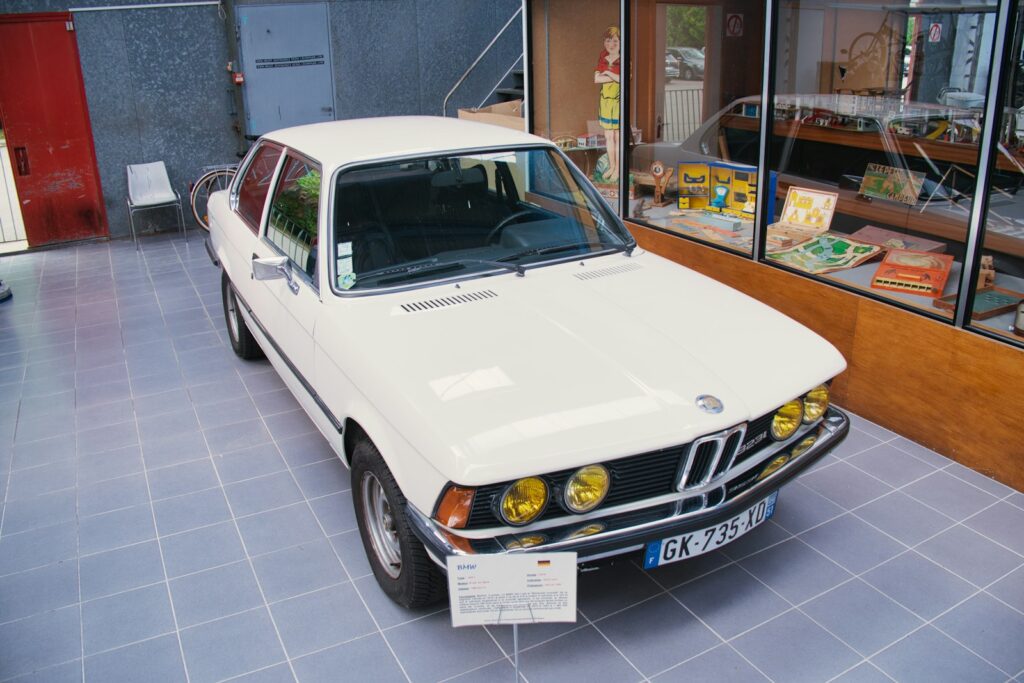
11. **1973 BMW 3.0 CSL “Batmobile”**Alright, prepare for something truly special, because the 1973 BMW 3.0 CSL, affectionately nicknamed the “Batmobile,” was a car that didn’t just play by the rules—it rewrote them. This vehicle took aerodynamics and distinctive styling to entirely new levels. With its incredibly bold design, highlighted by those unmistakable wings and spoilers, and its meticulously engineered lightweight construction, this BMW wasn’t just built for show. It was a formidable force that absolutely dominated European racing circuits, earning its place as a true icon of cutting-edge performance and uncompromising style.
The CSL was far more than a mere racing machine; it was a profound statement of pure innovation and forward-thinking engineering. Its utterly unique design, perfectly complemented by a powerful engine that sang a high-performance tune, quickly made it a beloved favorite among discerning car enthusiasts. This vehicle promised exhilarating thrills at every turn, challenging conventional wisdom and pushing the boundaries of what a sports car could be.
In a decade bustling with bold designs and powerful engines, the BMW 3.0 CSL stood out like a beacon, a car that effortlessly offered both sophisticated style and genuine substance. It perfectly captured the dynamic and spirited essence of the ’70s, embodying an era where cars were as thrilling to drive as they were captivating to behold, a living legend that continues to inspire awe and admiration among car lovers everywhere.
Car Model Information: 2023 Chrysler 300 Touring L
Name: BMW E9
Manufacturer: BMW
Production: 1968–1975
Assembly: Rheine
Class: Grand tourer
Layout: Front-engine, rear-wheel-drive
BodyStyle: Coupé
Related: BMW New Six
Engine: BMW M30,straight-six engine
Wheelbase: Convert
Length: Convert
Width: Convert
Height: Convert
Predecessor: BMW New Class coupé
Successor: BMW 6 Series (E24)
Designer: Wilhelm Hofmeister (automobile designer)
Platform: BMW New Class
Categories: All articles with unsourced statements, Articles with short description, Articles with unsourced statements from January 2019, BMW model codes, BMW vehicles
Summary: The BMW E9 is a range of coupés produced by German automaker BMW from 1968 to 1975. Initially released as the 2800 CS model, the E9 was based on the BMW 2000 C / 2000 CS four-cylinder coupés, which were enlarged to fit the BMW M30 six-cylinder engine. The E9’s bodywork was built by Karmann.
As a racing car, the E9 was very successful in the European Touring Car Championship and the Deutsche Rennsport Meisterschaft, especially the 3.0 CSL homologation model.
The E9 range was replaced by the E24 6 Series.
Get more information about: BMW E9
Buying a high-performing used car >>>
Brand: BMW Model: 3.0 CSL
Price: $29,791 Mileage: 4,103 mi.
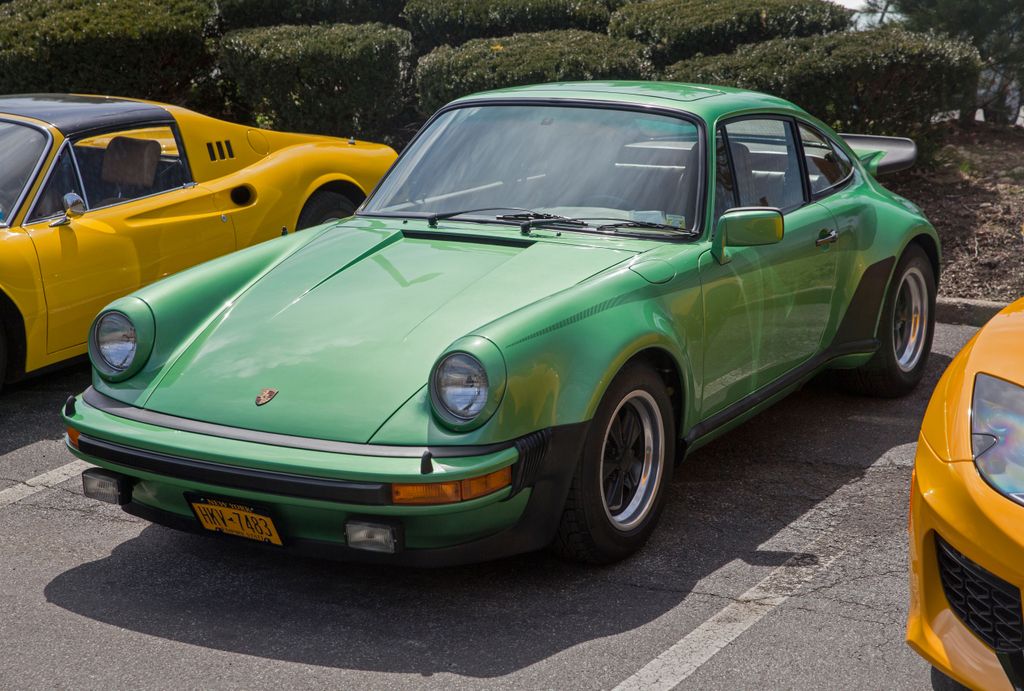
12. **1976 Porsche 911 Turbo (930)**Ready for a ride that absolutely defined performance and style? Say hello to the 1976 Porsche 911 Turbo, known to its adoring fans as the iconic 930. This wasn’t just another sports car; it was a turbocharged masterpiece that, once unleashed, immediately made it clear it could rival the most exotic Italian supercars of its era. With a blistering 0 to 60 mph sprint in just 5.1 seconds, this machine promised thrills that would literally pin you to your seat, establishing itself as a true icon of ’70s automotive design and engineering.
The 930 was so much more than just a performance machine; it was a profound statement of uncompromising style, a design marvel that would become instantly recognizable. Those sleek lines, that unmistakable powerful engine, and, of course, the legendary “whale tail” rear spoiler that became a signature 911 feature, all conspired to make it an absolute favorite among car enthusiasts. This vehicle didn’t just offer a driving experience; it promised an unforgettable journey every single time you slipped behind the wheel.
In a decade teeming with bold designs and an insatiable hunger for powerful engines, the Porsche 911 Turbo stood out as an undisputed legend, a car that flawlessly offered both breathtaking style and profound substance. It perfectly captured the dynamic and spirited essence of the ’70s, embodying an era where cars were built to excite, impress, and dominate, leaving a powerful and enduring legacy that still makes it a very sought-after classic even today.
Car Model Information: 2023 Dodge Challenger SRT Hellcat
Name: Porsche 911
Caption: The 1 millionth 911 produced on display at Volkswagen Group Forum, Berlin
Designer: Ferdinand Alexander Porsche
Manufacturer: Porsche
Production: September 1964 – present
Assembly: Stuttgart,Baden-Württemberg
Class: Sports car
BodyStyle: unbulleted list
Related: unbulleted list
Layout: Rear-engine design,rear-wheel drive
Predecessor: Porsche 356
Categories: 1970s cars, 1980s cars, 1990s cars, 2+2 coupés, 2000s cars
Summary: The Porsche 911 model series (pronounced Nine Eleven or in German: Neunelf) is a family of German two-door, high performance rear-engine sports cars, introduced in September 1964 by Porsche AG of Stuttgart, Germany. Now in its eighth generation, all 911s have a rear-mounted flat-six engine, and usually 2+2 seating, except for special 2-seater variants. Originally, 911s had air-cooled engines, and torsion bar suspension, but the 911 has been continuously enhanced, and evolved across generations. Though the 911 core concept has remained largely unchanged, water-cooled engines were introduced with the 996 series in 1998, and front and rear suspension have been replaced by Porsche-specific MacPherson suspension up front, and independent multi-link rear suspension.
The 911 has been raced extensively by private and factory teams, in a variety of classes. It is among the most successful competition cars. In the mid-1970s, the naturally aspirated 911 Carrera RSR won world championship races including Targa Florio and the 24 Hours of Daytona. The 911-derived 935 turbo also won the 24 Hours of Le Mans in 1979. Porsche won the World Championship for Makes in 1976, 1977, 1978, and 1979 with 911-derived models.
In a 1999 poll to determine the Car of the Century, the 911 ranked fifth — one of two in the top five that had remained continuously in production (the original Beetle remained in production until 2003). The one millionth example was manufactured in May 2017 and is in the company’s permanent collection.
Get more information about: Porsche 911
Buying a high-performing used car >>>
Brand: Porsche Model: 911 Turbo
Price: $72,500 Mileage: 2,818 mi.
Read more about: The Ultimate Status Symbol? Unpacking the Millions Collectors Pay for Reborn Classic Cars
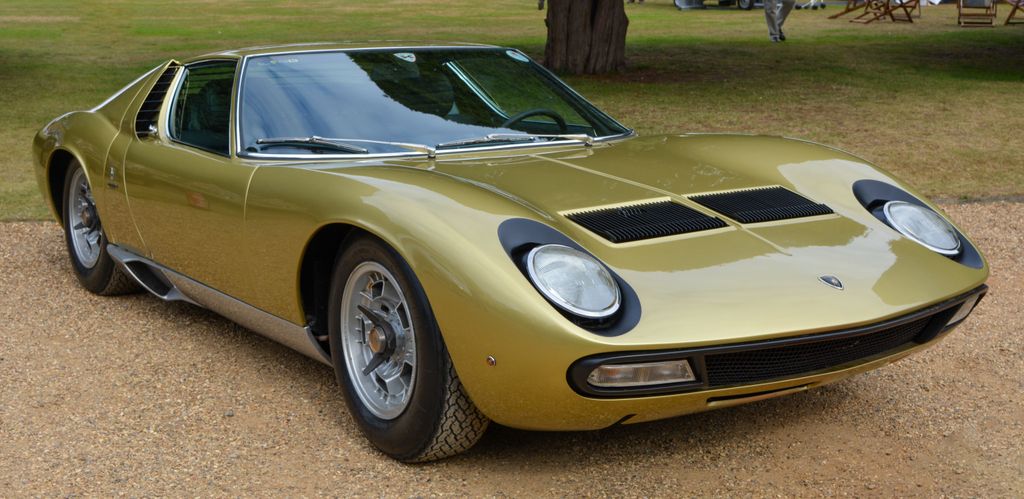
13. **1971 Lamborghini Miura SV**Hold onto your hats, because we’re talking about pure automotive royalty here! The 1971 Lamborghini Miura SV wasn’t just *a* car; it was the ultimate, final evolution of what many consider the world’s very first true supercar. This magnificent beast took performance and sheer, unadulterated luxury to exhilarating new heights, redefining what was possible on four wheels. With its jaw-dropping design, a masterpiece of Italian artistry, and an engine that growled with powerful intent, it was a vehicle that didn’t just capture attention—it captured the imagination of car enthusiasts across the entire planet.
The Miura SV was so much more than just a pretty face, even though it was arguably one of the most beautiful cars ever made; it was a ferocious performance machine designed for serious speed. Its incredibly powerful engine, delivering an unforgettable rush of acceleration, combined with surprisingly agile handling, made it an absolute joy to drive. This vehicle promised pure, unadulterated thrills at every turn, a symphony of power and elegance.
In a decade defined by audacious designs and an insatiable hunger for powerful engines, the Lamborghini Miura SV stood out as an undeniable true icon. It embodied the very spirit of the ’70s: bold, luxurious, and utterly exhilarating. It was a vehicle that was as exciting to drive as it was captivating to behold, a living legend that continues to inspire awe and admiration among car lovers everywhere, cementing its place in automotive history.
Car Model Information: 2023 Dodge Challenger SRT Hellcat
Name: Lamborghini Miura
Caption: 1971 Lamborghini Miura P400 SV
Manufacturer: Lamborghini
Production: 1966–1973
Assembly: Sant’Agata Bolognese
Successor: Lamborghini Countach
Class: Sports car
BodyStyle: coupé
Layout: Transverse engine,rear mid-engine, rear-wheel-drive layout
Engine: cvt,Lamborghini V12,V12 engine
Transmission: Manual transmission
Wheelbase: 2500 mm
Abbr: on
Length: 4360 mm
Width: 1760 mm
Height: 1055 mm
Weight: 1292 kg
Designer: Marcello Gandini
Sp: us
Categories: 1970s cars, All articles needing additional references, All articles with unsourced statements, Articles needing additional references from February 2024, Articles with short description
Summary: The Lamborghini Miura is a sports car produced by Italian automaker Lamborghini between 1966 and 1973. The car was the first high-performance production road car with a rear mid-engine, rear-wheel-drive layout, which has since become the standard for performance-oriented sports cars. When released, it was the fastest production car in the world.
The Miura was originally conceived by Lamborghini’s engineering team, which designed the car in its spare time against the wishes of company founder Ferruccio Lamborghini, who preferred powerful yet sedate grand touring cars over the race car-derived machines produced by local rival Ferrari. However, when the development mule was revealed to Ferruccio, he gave approval for its development to continue.
The Miura’s rolling chassis was presented at the 1965 Turin Auto Show, and the prototype P400 debuted at the 1966 Geneva Motor Show. It received stellar receptions from showgoers and the motoring press alike, each impressed by Marcello Gandini’s sleek styling and the car’s revolutionary mid-engine design.
Lamborghini’s flagship, the Miura received periodic updates and remained in production until 1973. A year later the Countach entered the company’s lineup, amid tumultuous financial times for the company.
Get more information about: Lamborghini Miura
Buying a high-performing used car >>>
Brand: Lamborghini Model: Miura SV
Price: $72,500 Mileage: 2,818 mi.
Read more about: Unearthing Automotive Legends: The Most Spectacular Barn Finds Ever
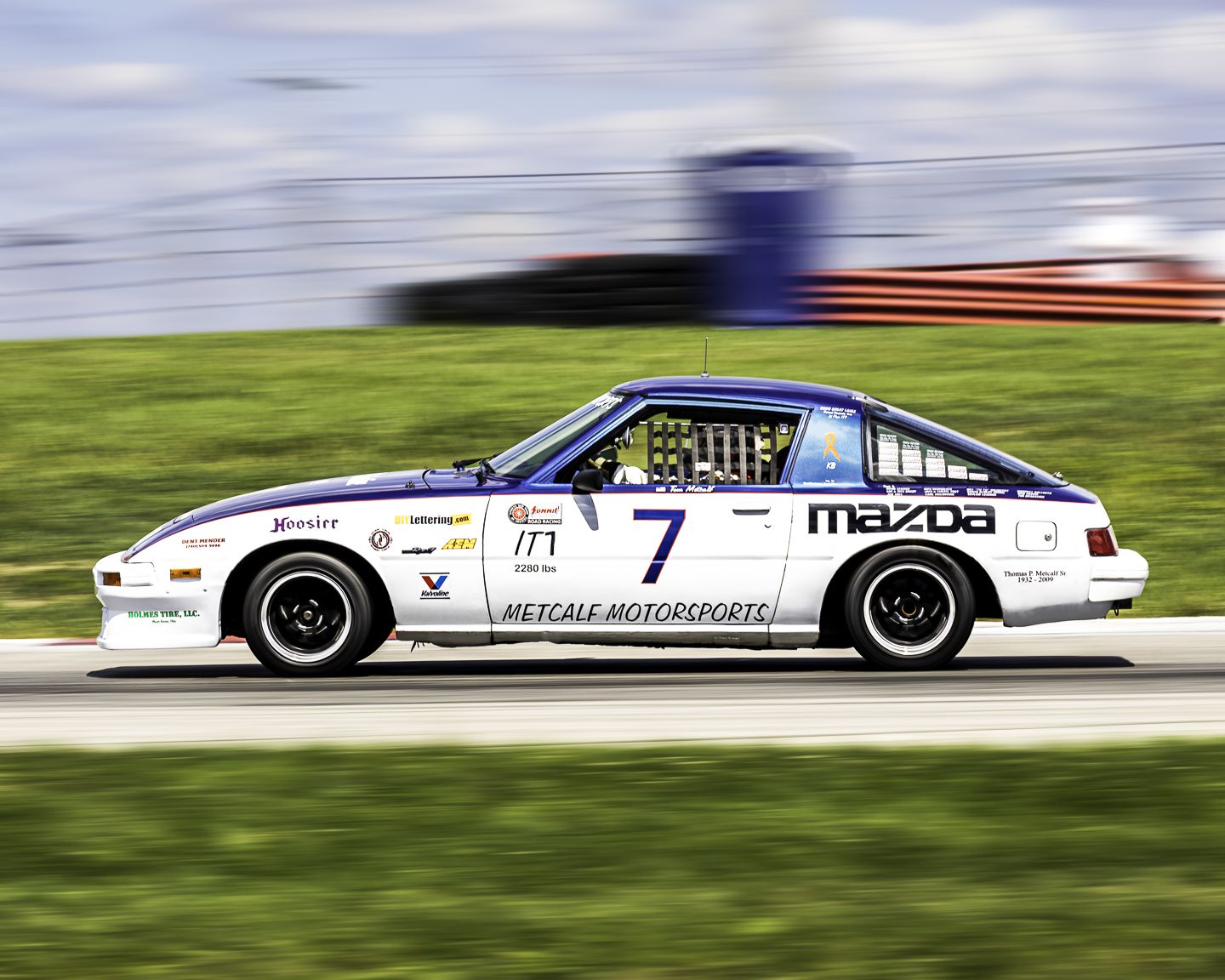
14. **1979 Mazda RX-7**Alright, gear up for something truly groundbreaking! The 1979 Mazda RX-7 arrived on the scene and pretty much introduced the world to the unique, high-revving thrills of rotary-powered performance. This wasn’t your grandpa’s sedan; it was a car that promised an absolutely distinctive driving experience, a real breath of fresh air. With its lightweight design, perfectly balanced chassis, and that signature high-revving Wankel engine, it was a vehicle that instantly captured the imagination of car enthusiasts everywhere, proving innovation could come in a sleek, affordable package.
The RX-7 was so much more than just a performance machine; it was a profound statement of innovation and daring engineering. Its unique rotary engine, offering a silky-smooth power delivery unlike anything else on the road, combined with incredibly agile handling, quickly made it a beloved favorite among car enthusiasts. This vehicle promised pure, unadulterated thrills at every turn, transforming every drive into an engaging, spirited adventure and opening the door for a new generation of sports car lovers.
In a decade filled with bold designs and powerful engines, the Mazda RX-7 truly stood out as a car that flawlessly offered both compelling style and surprising substance. It perfectly captured the dynamic and spirited essence of the ’70s, embodying an era where cars were as thrilling to drive as they were captivating to behold. It even went on to spark a craze in drifting, where enthusiasts tuned it to perfection, ensuring its powerful and enduring legacy in automotive history.
Car Model Information: 1986 Mazda RX-7 GXL 2D Coupe
Name: Mazda RX-7
Caption: 1994 Mazda RX-7 R2 (FD3S)
Manufacturer: Mazda
Aka: Mazda Savanna RX-7 (Japan, 1978–1991),Mazda ɛ̃fini RX-7 (Japan, 1991–1997)
Class: Sports car
Production: 1978–2002,811,634 produced
Assembly: Hiroshima
Platform: Mazda F platform
Layout: Front-engine, rear-wheel-drive layout#Front mid-engine, rear-wheel-drive layout
Predecessor: Mazda RX-3
Successor: Mazda RX-8
Categories: 1980s cars, 1990s cars, 2000s cars, 24 Hours of Le Mans race cars, All articles needing additional references
Summary: The Mazda RX-7 is a front mid engine, rear-wheel-drive, rotary engine-powered sports car, manufactured and marketed by Mazda from 1978 through 2002 across three generations, all of which incorporated the use of a compact, lightweight Wankel rotary engine.
The first-generation RX-7, codenamed SA (early) and FB (late), is a two-seater two-door hatchback coupé. It featured a 12A carbureted rotary engine as well as the option for a 13B rotary engine with electronic fuel injection in later years. The second-generation RX-7, carrying the internal model code FC, was offered as a two-seater coupé with a 2+2 option available in some markets, as well as in a convertible body style. This was powered by the 13B rotary engine, offered in naturally aspirated or turbocharged forms. The third-generation RX-7, model code FD, was offered as a two-seater coupé with a 2+2 version offered as an option for the Japanese market. It featured a sequentially turbocharged 13B REW engine.
More than 800,000 RX-7s were manufactured over its lifetime.
Get more information about: Mazda RX-7
Buying a high-performing used car >>>
Brand: Mazda Model: RX-7
Price: $13,991 Mileage: 52,352 mi.
Read more about: The Undeniable Rise: 12 Vintage Cars That Have Skyrocketed to 10x Their Original Value
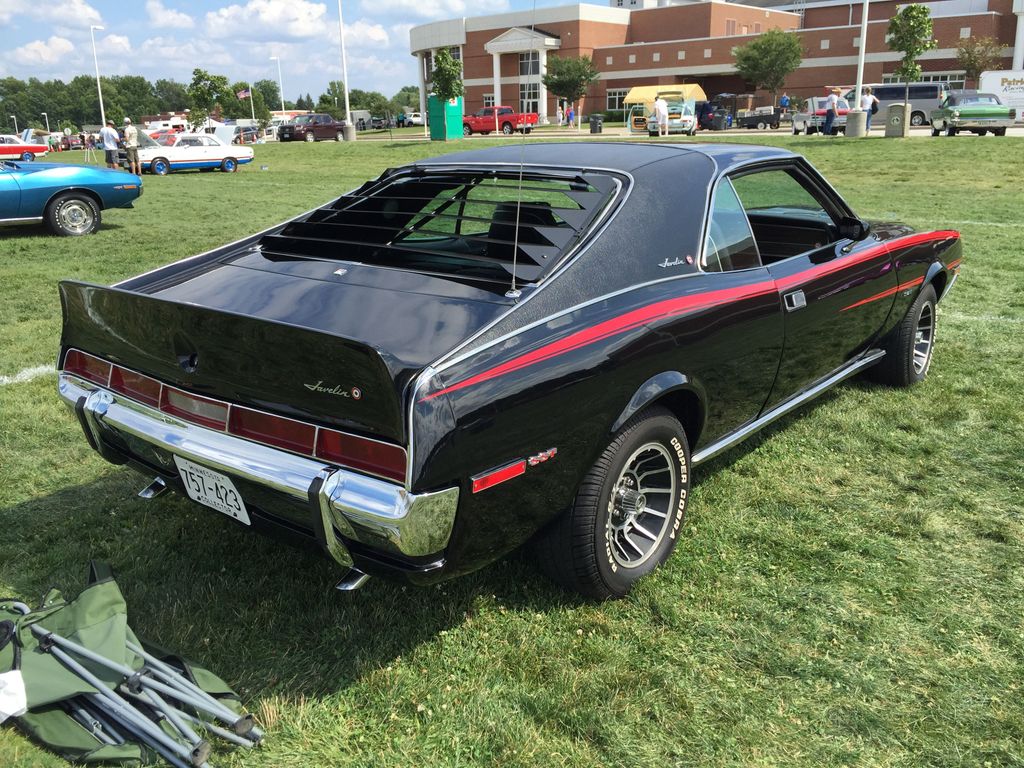
15. **1970 AMC Javelin SST**And for our final, fantastic ride, let’s hear it for the 1970 AMC Javelin SST! This was American Motors’ spirited answer to the fiercely competitive pony car wars, a vehicle that brilliantly combined eye-catching style with a hearty dose of performance. With its powerful engine, which definitely packed a punch, and those sleek, athletic design lines, it was a car that absolutely captured the imagination of car enthusiasts around the world, proving that AMC could hang with the big dogs and do it with flair.
The Javelin SST wasn’t just a pretty face or a contender; it was a bona fide performance machine that held its own. Its unique design and powerful engine worked in harmony, making it a favorite among car enthusiasts who appreciated something a little different, a vehicle that promised exhilarating thrills at every turn. It was a car that carved out its own identity, showcasing AMC’s commitment to delivering both excitement and distinctive aesthetics.
In a decade bursting with bold designs and powerful engines, the AMC Javelin SST stood out as a car that truly offered both compelling style and genuine substance. It perfectly captured the dynamic and spirited essence of the ’70s, embodying an era where cars were as thrilling to drive as they were captivating to behold. This Javelin SST truly rounded out a decade of automotive excellence, leaving us with a lasting impression of innovation and memorable design.
Car Model Information: 2021 Lincoln Navigator Reserve
Name: AMC Javelin
Caption: 1971 AMC Javelin SST
Manufacturer: American Motors Corporation
Aka: unbulleted list
Production: 1967–1974
ModelYears: 1968–1974
Assembly: unbulleted list
Designer: Dick Teague
Class: unbulleted list
BodyStyle: hardtop
Layout: Front-engine, rear-wheel drive layout
Platform: AMC’s “junior” cars
Predecessor: Rambler Marlin
Categories: 1970s cars, AMC vehicles, All articles that may contain original research, All articles with dead external links, All articles with unsourced statements
Summary: The AMC Javelin is an American front-engine, rear-wheel-drive, two-door hardtop automobile manufactured by American Motors Corporation (AMC) across two generations, 1968 through 1970 and 1971 through 1974 model years. The car was positioned and marketed in the pony car market segment.
Styled by Dick Teague, the Javelin was available in a range of trim and engine levels, from economical pony car to muscle car variants. In addition to manufacture in Kenosha, Wisconsin, Javelins were assembled under license in Germany, Mexico, Philippines, Venezuela, as well as Australia – and were marketed globally. American Motors also offered discounts to U.S. military personnel, and cars were taken overseas.
The Javelin won the Trans-Am race series in 1971, 1972, and 1976. The second-generation AMX variant was the first pony car used as a standard vehicle for highway police car duties by an American law enforcement agency.
Get more information about: AMC Javelin
Buying a high-performing used car >>>
Brand: AMC Model: Javelin SST
Price: $39,193 Mileage: 92,317 mi.
Read more about: The Undeniable Rise: 12 Vintage Cars That Have Skyrocketed to 10x Their Original Value
Phew! What a ride, right? From muscle-bound titans roaring down American highways to exotic European beauties turning heads with their sleek lines and revolutionary engineering, the 1970s truly gifted us an unforgettable parade of automotive legends. This wasn’t just a collection of cars; it was a vibrant tapestry of power, rebellion, and unparalleled style that perfectly mirrored the wild, untamed spirit of the decade itself. Each one of these machines, whether a track-devouring beast or a luxurious grand tourer, contributed to a legacy that continues to rev our engines and spark our imaginations today. So, next time you see one of these iconic rides, give it a nod – you’re looking at a piece of history that still drives us wild!



